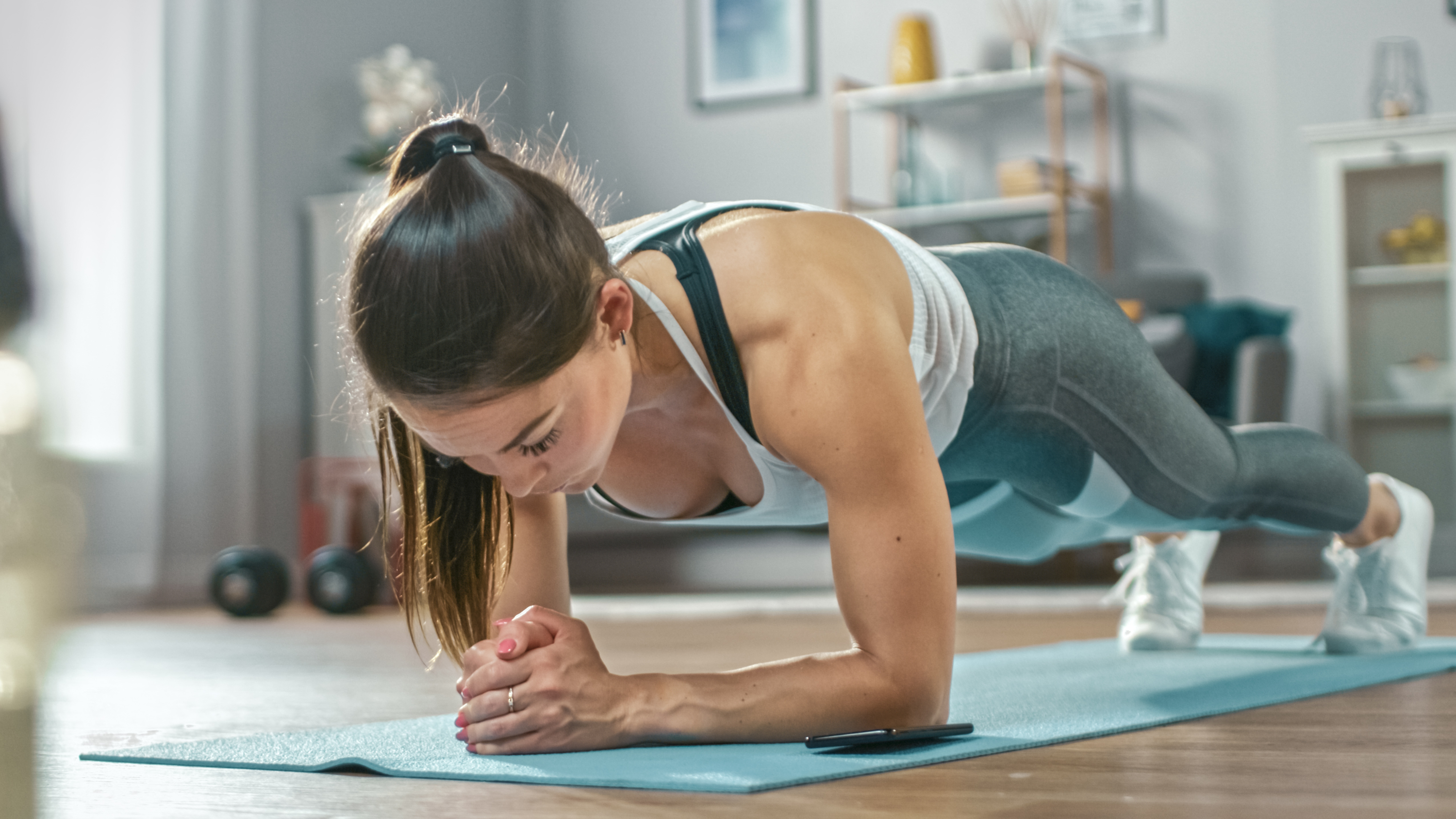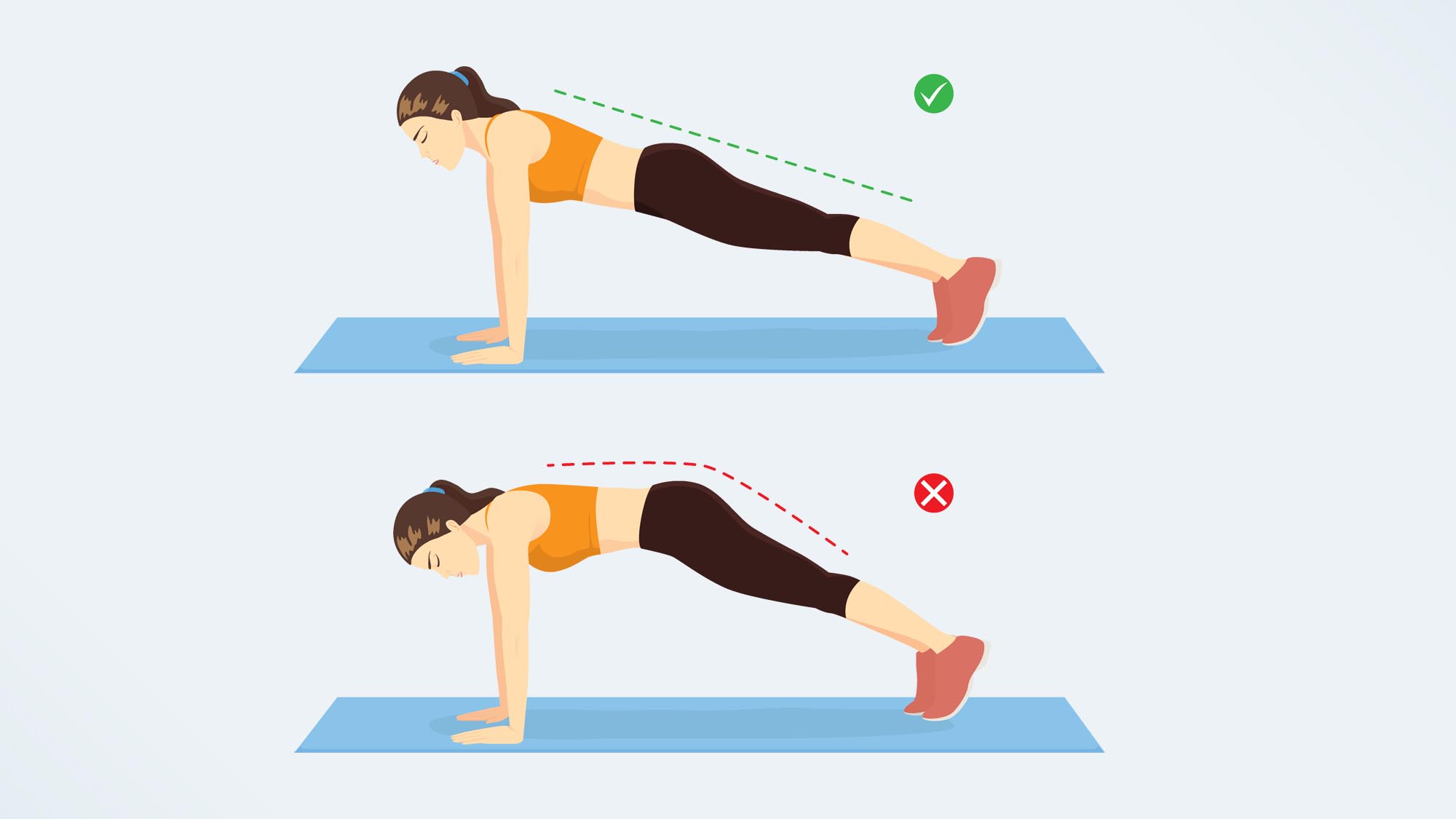Plank exercise: This is how long you should hold a plank for
Spoiler: It’s not as long as you think

Introducing the timeless plank exercise: a cornerstone of core training renowned for its ability to strengthen and define the abdominal muscles. But the question stands, how long should you hold a plank to reap its full benefits?
Planking may seem deceptively simple—a static position requiring no movement—yet it engages multiple muscle groups simultaneously, making it a powerhouse exercise for building core strength and enhancing overall stability. There is no doubt that this exercise is one of the best ab workouts you can do.
Beyond sculpting your abs, the plank targets key muscle groups including the shoulders, chest, lower back, quads, and glutes. Its versatility and effectiveness have cemented its place in fitness routines worldwide, from beginner workouts to elite athlete training regimens.
Ever wondered about the limits of plank endurance? The Guinness World Record, set in 2021, stands at an astonishing nine hours, 30 minutes, and one second—an impressive feat that underscores the plank's formidable challenge. But fear not, you needn't aspire to plank for hours on end to reap its rewards.
Stick with us as we delve into the optimal plank duration for maximizing results and explore alternative core exercises that rival the plank.
How long do you need to hold a plank to get results?
Research professor and spine specialist Stuart McGill, Ph.D. reported to the Telegraph that you only need to hold a plank for 10 seconds to work the core and see results. While some personal trainers disagree, arguing that you should start at 10 seconds and try to build up to 60 seconds, McGill believes that holding three sets of 10-second planks is better for the average person’s back health.

How to do a plank with the correct form
Of course, as well as how long you hold for, your position during the plank is imperative for both the health of your spine and the results in your abs. In order to correctly get into the plank position, start in a press-up position, with your arms slightly wider than your shoulders and your body weight resting on your hands flat against the floor, or your forearms, depending on which variation you opt for. Think about creating a straight line from your heels to the crown of your head, engaging your core.
Sign up to get the BEST of Tom's Guide direct to your inbox.
Get instant access to breaking news, the hottest reviews, great deals and helpful tips.
The common mistakes people make when holding a plank
The easiest way to spot if you’re planking incorrectly is to take a video of yourself in the position, and look out for the following mistakes:
- Your hips are too high. If you’re raising your hips in the plank, you’re making the position easier by putting less strain on the core muscles. The same goes for dropping your hips too low to the ground. When you’re in the plank position, think about sucking your belly button in towards your spine, and engaging your glutes to keep your body in a straight line
- You’re curving your spine. To avoid putting too much pressure on your spine in the plank, keep your eyes focused on the ground to relax your neck. If you look forwards or upwards during a plank, your spine will no longer be in a neutral position
- Your arms aren’t in the right position. Remember, your shoulders should be stacked over your elbows. If your elbows are tucked too close to your body or are too far in front of your shoulders, you won’t be able to fully engage your core correctly.
What are the best plank variations to try?
- Side planks: Lie straight out on one side, legs stacked. Rest your forearm flat on the floor and ensure your elbow is in line with your shoulder. Engage your abs and raise your hips and knees from the floor, keeping a straight line from head to feet. Only your forearm and foot should be in contact with the ground. Don’t allow your hips to sag and keep looking straight ahead for the duration. You can rest your top arm on your hip or, to make the move more challenging, raise it towards the ceiling. Check out what happened when this fitness writer did side planks every day for a week.
- Walking planks: To do a walking plank, also known as an up-down plank, get into the plank position on an exercise mat. Keep your palms flat on the floor, with your arms straight. Think about keeping your hands beneath your shoulders. Brace your core as you drop your left elbow down to the ground, followed by your right. You should still be in a plank position, with your weight on your elbows. Pause here, then press your left palm into the floor, and rise back up to a high plank position. Here's what happened when our fitness editor did walking planks every day for a week.
- Plank jacks: To do a plank jack, start in a plank position, with your arms extended, your hands under your shoulders, your feet together, and so your body is forming a straight line from the crown of your head to the heels of your feet. Keep your core engaged by thinking about sucking your belly button into your spine. Jump both feet out to the side, as you would in a jumping jack. Quickly jump your feet back in, and continue jumping your feet in and out, keeping your core engaged. Read what happened when our fitness editor did plank jacks for a week here.
More from Tom's Guide

Jane McGuire is Tom's Guide's Fitness editor, which means she looks after everything fitness related - from running gear to yoga mats. An avid runner, Jane has tested and reviewed fitness products for the past five years, so knows what to look for when finding a good running watch or a pair of shorts with pockets big enough for your smartphone. When she's not pounding the pavements, you'll find Jane striding round the Surrey Hills, taking far too many photos of her puppy.
- Jessica DowneySenior Fitness Writer
- Sam HopesSenior Fitness Writer, Fitness and Mobility Coach
